
Gust is a video game developer and division of Koei Tecmo Games, known for their Atelier franchise.
Mai Kadowaki is a Japanese voice actress and singer from Tokyo, Japan. She was previously known as 門脇舞.

The Atelier series is a franchise of role-playing video games developed by Gust Corporation since 1997, primarily for the PlayStation line of consoles. Main entries in the series have seen consistent releases for Microsoft Windows since 2015 and the Nintendo Switch since 2017. New games are released in the series on an almost yearly basis. The series was solely released in Japan and Asia until 2005, after which the series has seen worldwide releases.
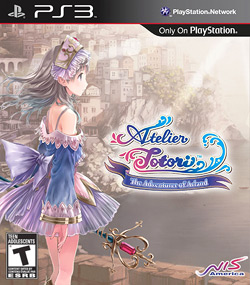
Atelier Totori: The Adventurer of Arland is a Japanese role-playing video game developed by Gust Co. Ltd. It was first released for PlayStation 3 on June 24, 2010 in Japan.

Atelier Meruru: The Apprentice of Arland is a Japanese role-playing video game developed by Gust Co. Ltd. It was released for PlayStation 3 on June 23, 2011 in Japan. Atelier Meruru is the thirteenth installment in the Atelier series, and it continues the series' emphasis on item creation and synthesis. It is the third game in the Arland series and a direct sequel to Atelier Totori: The Adventurer of Arland. It was withdrawn from the market after a month due to being mis-rated, only being re-released after CERO applied a B rating a few days later. It is notably the last title that Gust self-published before merging with Tecmo Koei. A PlayStation Vita version titled Atelier Meruru Plus: The Apprentice of Arland was released on March 20, 2013 in Japan.

Atelier Ayesha: The Alchemist of Dusk is a Japanese role-playing video game developed by Gust Co. Ltd. The character designs are by Hidari. It is the fourteenth title in the Atelier series, coming after Atelier Meruru, but has a storyline independent from previous titles in the series. The game is the first installment in the Dusk storyline. An English language release was published in March 2013 by Tecmo Koei in western regions. A PlayStation Vita version titled Atelier Ayesha Plus: The Alchemist of Dusk was released on March 27, 2014 in Japan, January 13, 2015 in North America and January 14, 2015 in Europe. There is also a drama CD and novel based on the game.

Atelier Escha & Logy: Alchemists of the Dusk Sky is a Japanese role-playing video game developed by Gust Co. Ltd. Given the project code "A15", it is the 15th game in the official Atelier series and the second installment of the Dusk storyline. Hidari remains as the character designer and the game runs on the LTGL engine. It was released in Japan on 27 June 2013.

BigHit Series are video games for the Korean Sony PlayStation 2, PlayStation 3 and PlayStation Portable consoles that have been officially re-released at a lower price by Sony and third parties that meet specific criteria. While the term "BigHit series" only applies to selections in South Korea, equivalent programs exist in North America, PAL territories and Japan and Asia.

Ar nosurge: Ode to an Unborn Star is a Japanese role-playing video game developed by Gust and published by Koei Tecmo. Directed by Akira Tsuchiya, the game takes the anime art style of Gust's flagship Atelier video game series, and puts it into a science fiction space opera-type setting. While playing as an RPG, the game is very story heavy, with virtually all gameplay mechanics feeding into the overall plot, including many segments playing as an interactive visual novel. Designed with player immersion as a core concept, the player actually plays as themselves, using their video game console as a means to communicate with characters as themselves, while otherwise controlling characters as one typically does in a video game. The game alternates between following two sets of characters - Delta and Casty, and Earthes and Ion, as they work through issues related to the hostile race known as Sharl that are antagonizing the space station that humanity currently lives on, while working through many of their own personal issues of their past.
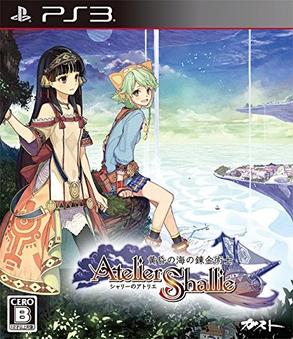
Atelier Shallie: Alchemists of the Dusk Sea is a 2014 Japanese role-playing video game developed by Gust for the PlayStation 3. It is the 16th main entry in Gust's Atelier series and is currently the final installment of the Dusk trilogy. The game was released in North America and Europe in March 2015.

Atelier Marie: The Alchemist of Salburg is a 1997 role-playing video game developed and published by Gust. The first entry in the Atelier series, it originally released for the PlayStation, then received ports and enhanced versions on other platforms. A remake for modern platforms, Atelier Marie Remake, was released worldwide in 2023 by Koei Tecmo. Following the efforts of alchemist-in-training Marie to pass an exam within five years, the gameplay focuses on exploring for materials to create alchemical recipes, and completing story missions and requests within the in-game time limit.
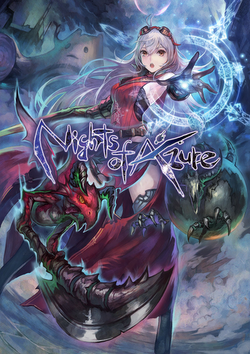
Nights of Azure is a 2015 action role-playing video game developed by Gust and published by Koei Tecmo for the PlayStation 3, PlayStation 4, PlayStation Vita and Microsoft Windows. The PlayStation 4 version received a North American release on March 29, 2016, with a European release following on April 1, 2016, and a Microsoft Windows release on February 7, 2017.

Atelier Sophie: The Alchemist of the Mysterious Book is a 2015 Japanese role-playing video game developed by Gust for the PlayStation 3, PlayStation 4, PlayStation Vita (digital-only) and Microsoft Windows. It is the 17th main game in the Atelier series and the first game of the Mysterious storyline, as well as the debut of Koei Tecmo taking over publishing rights for Western regions in place of NIS America. The enhanced version of the game titled Atelier Sophie: The Alchemist of the Mysterious Book DX was released for PlayStation 4, Windows, and the Nintendo Switch on April 22, 2021.
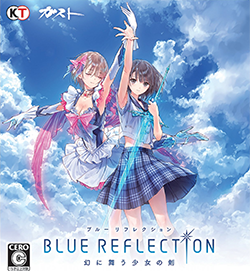
Blue Reflection is a role-playing video game developed by Gust. It was published by Koei Tecmo in March 2017 in Japan for the PlayStation 4 and PlayStation Vita, and was released in September 2017 in North America and Europe for the PlayStation 4 and Microsoft Windows. The player takes the role of Hinako Shirai, a ballet dancer who due to a knee injury no longer can dance, but who is given magical power allowing her to fight and move freely. The game follows a day cycle, which sees Hinako attend school and spend time with classmates, and visit another world where she fights monsters in a turn-based battle system. By becoming close friends with her classmates, Hinako can use support abilities from them in battle.
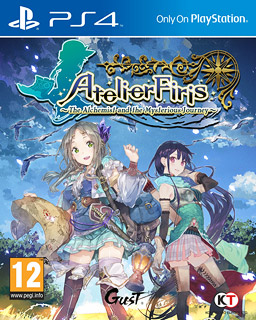
Atelier Firis: The Alchemist and the Mysterious Journey is a 2016 Japanese role-playing video game developed by Gust for the PlayStation 4, PlayStation Vita, and Microsoft Windows. It is the eighteenth main game in the Atelier series and the second game of the Mysterious storyline. It was released on North America and Europe on March 10, 2017, the following year. The enhanced version of the game titled Atelier Firis: The Alchemist and the Mysterious Journey DX was released for PlayStation 4, Windows, and the Nintendo Switch on April 22, 2021.

Atelier Lydie & Suelle: The Alchemists and the Mysterious Paintings is a role-playing video game developed by Gust, and originally released in Japan for the PlayStation Vita and PlayStation 4 in December 2017. It was released worldwide in March 2018 for the PlayStation 4, Nintendo Switch and Microsoft Windows. It is the nineteenth main entry in the Atelier series celebrating the 20 years of the franchise. It is also the third game of the Mysterious storyline and the last one in chronological order.

Atelier Lulua: The Scion of Arland is a 2019 role-playing video game developed by Gust and published by Koei Tecmo for PlayStation 4, Nintendo Switch and Windows. It is part of the Atelier series, and the fourth entry in the Arland subseries. Following trainee alchemist Lulua Frixell as she goes on a journey following the discovery of a magical book called the Alchemyriddle, gameplay features exploration and battles using turn-based combat, and alchemic synthesising for items and quest objectives.

Nelke & the Legendary Alchemists: Ateliers of the New World is a 2019 video game developed by Gust and published by Koei Tecmo for PlayStation 4, Nintendo Switch, Windows, and PlayStation Vita only in Japan. A title within the Atelier series, the gameplay combines a city-building simulation with role-playing elements. The storyline follows Nelke von Lestamm as she attempts to build her own city while seeking a magical tree, employing legendary alchemists from the Atelier franchise to aid her.

Atelier Sophie 2: The Alchemist of the Mysterious Dream is a 2022 Japanese role-playing video game developed by Gust. It was released in February 2022 for Microsoft Windows, Nintendo Switch, and PlayStation 4. It is the 23rd game in the Atelier series and the fourth game in its Mysterious subseries, while chronologically set between the events of Atelier Sophie: The Alchemist of the Mysterious Book and Atelier Firis: The Alchemist and the Mysterious Journey. It is also the second game of the series with a returning protagonist, after Atelier Ryza 2: Lost Legends & the Secret Fairy.



















